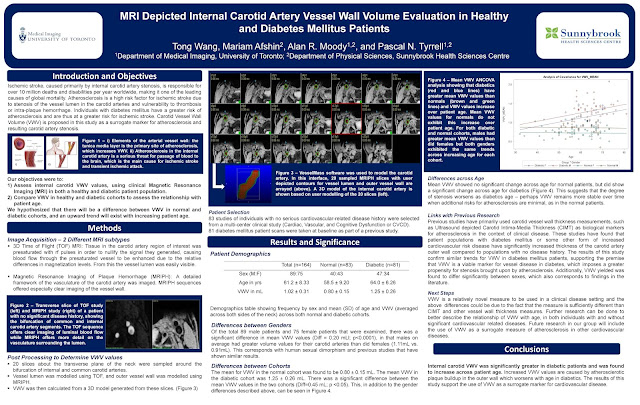 |
| GeorgeWang – ROP299Y 2016-17 |
Engaging Primary Care in Research: Not Always an Easy Task
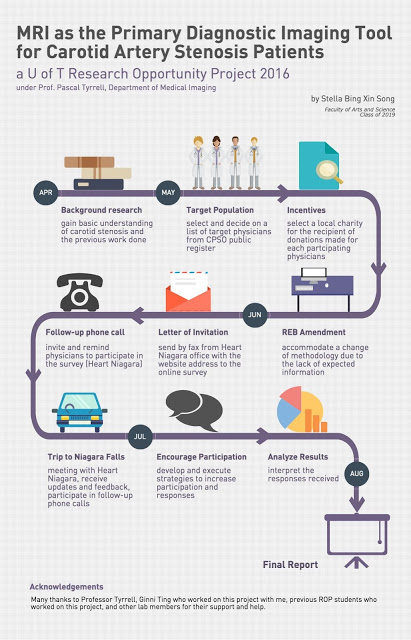 |
| Stella Song ROP Summer 2016 |
I am Stella Bing Xin Song, currently a second year student studying pharmacology and psychology at University of Toronto. I was fortunate to be a part of the 2016 Research Opportunity Program (ROP) supervised by Dr. Pascal Tyrrell in the Department of Medical Imaging at University of Toronto.
 My ROP project focused on evaluating the feasibility of using MRI as the primary imaging modality for carotid artery stenosis diagnosis and assessment (not sure what we are talking about? See previous posts here and here). Along with Ginni Ting, a student volunteer in Dr. Tyrrell’s lab, we surveyed physicians in the Niagara region of Ontario to learn about their perspectives on this proposal. Our community partner in this research was Heart Niagara – a fantastic local organization that has been guiding advances in cardiac health education and services since 1977.
My ROP project focused on evaluating the feasibility of using MRI as the primary imaging modality for carotid artery stenosis diagnosis and assessment (not sure what we are talking about? See previous posts here and here). Along with Ginni Ting, a student volunteer in Dr. Tyrrell’s lab, we surveyed physicians in the Niagara region of Ontario to learn about their perspectives on this proposal. Our community partner in this research was Heart Niagara – a fantastic local organization that has been guiding advances in cardiac health education and services since 1977. Unfortunately, the response rate for this online survey was very low. Reasons given for the reluctance to participate were that physicians were on a tight schedule and were busy with their patients. Feedback from participants was that the online survey seemed long. Nevertheless, from the responses received, we were able to learn more about physicians’ perspectives of using MRI for carotid artery stenosis diagnosis and assessment.
Unfortunately, the response rate for this online survey was very low. Reasons given for the reluctance to participate were that physicians were on a tight schedule and were busy with their patients. Feedback from participants was that the online survey seemed long. Nevertheless, from the responses received, we were able to learn more about physicians’ perspectives of using MRI for carotid artery stenosis diagnosis and assessment.In the end, it was an exciting and valuable experience to plan out and execute this research project. Most importantly, I had the pleasure to join Dr. Tyrrell’s lab and meet his team. I am grateful for all the help and support which I have received throughout my time at the lab. I look forward to continuing to work as a member of Dr. Tyrrell’s lab.
Stella Bing
Wow! What a Busy Summer….
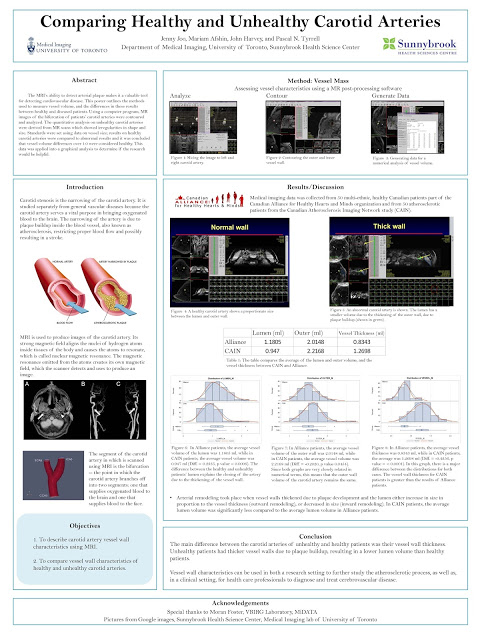 |
| Jenny Joo – YSP 2016 |
Over 20 students in the lab this summer beavering away at some great projects. Last week my two Youth Summer Program (University of Toronto) students finished their three week stay with us.
Jenny and Michelle both did fantastic work.
Today Jenny will show you her poster entitled:“Comparing Healthy and Unhealthy Carotid Arteries”
of Toronto in the future. She spent the last 3 weeks in U of T’s YSP Medical
Research program, where she was placed in two different medical imaging labs: The
MiDATA lab of U of T and the Vascular Biology Imaging Research lab at
Sunnybrook Hospital.
MRI scans of the carotid artery because it focused on both research and
clinical aspects and had this to say about her experience with us: “It has been an enriching 3 weeks working with my PI, Pascal
Tyrrell, my mentors, John Harvey and Moran Foster, and the rest of the research
group.”
An “Egg-cellent” Journey to Investigate Carotid Artery Stenosis in Cambridge, Ontario…
Last Wednesday, my ROP students Kiersten and Indranil, and UofT medical student Eli Lechtman had the opportunity to interview the legendary (see here) Dr. Kim Tysdale – a general practitioner in Cambridge, Ontario.
Why do you ask? Well each year 50,000 Canadians suffer from a stroke with 26% due to carotid artery disease. Carotid artery stenosis is the narrowing of the carotid arteries due to plaque buildup (see atherosclerosis). These plaques can then rupture and create blood clots that travel up to the brain. In turn, these blood clots then get stuck in the brain’s smaller blood vessels, causing a stroke. So plaque = bad and ruptured plaque = worse!
What if we had a clue as to which plaque may rupture? Well, in turns out that the presence of intraplaque hemorrhage (IPH) can help us predict just that! IPH is bleeding within the plaques, which causes them to become more vulnerable (see vulnerable plaque). There is a 6 times greater risk of stroke in people with IPH! And…. a new medical imaging technique called MRIPH imaging allows for visualization of IPH. MRIPH is similar to traditional MRI but highlights the artery walls and looks at the arterial plaques.
While in Cambridge, Kiersten, Indranil, and Eli presented Dr. Tysdale with an overview of medical imaging techniques for the assessment of carotid artery stenosis with an emphasis on the new MRIPH technique. Informing physicians like Dr. Tysdale which of his patients are more at risk of having vulnerable plaques (by providing information on IPH) could result in patients receiving more appropriate and timely treatment – thereby reducing the number of strokes!
BTW, we had Dr Tysdale at “hello” (not sure what I am referring to? See here).
So what up with the eggs? Kiersten, Indranil, and Eli also had the chance to tour Dr. Tysdale’s beautiful country house and meet his lovely wife (and nurse!), Eva, who sent everyone home with fresh chicken eggs! Awesome.
Thank you Dr Tysdale for being such a great sport!
Here is their infographic of the trip (great job gang!). Enjoy!
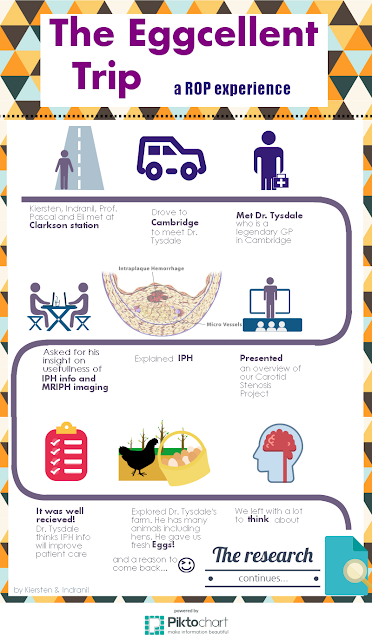 |
| Kiersten Thomas and Indranil Balki – ROP Summer 2015 |
Stay tuned for more ROP adventures!
Pascal Tyrrell
MRA Is More Cost-Effective than the Current Strategy for Testing > 70% Carotid Stenosis
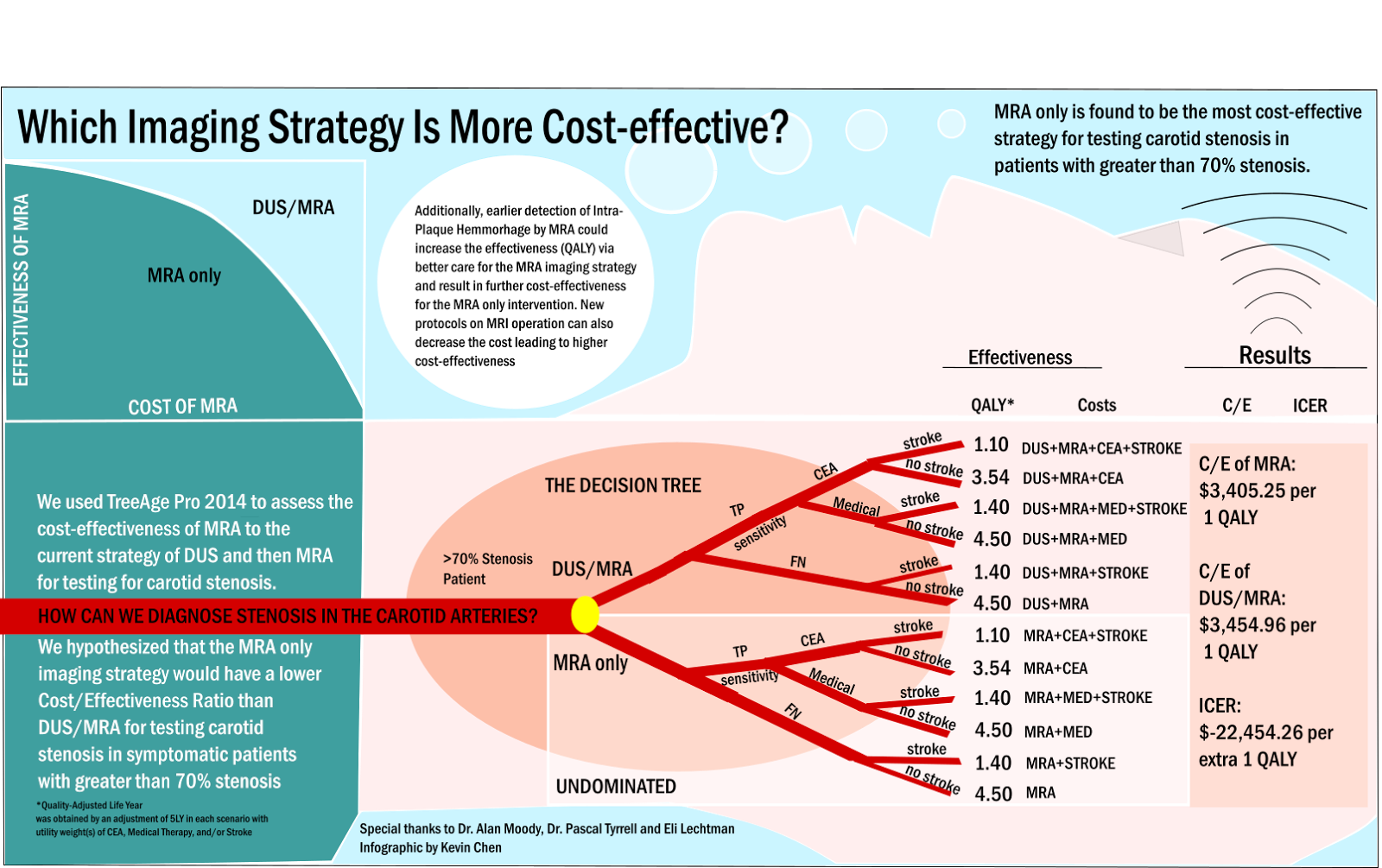 |
| ROP Research Forum March 5th, 2015 – Kevin Chen |
physiology in the University of Toronto Life Sciences Program. His main goal is to get into
medical school and to enjoy the UofT experience as much as possible!
of cost effectiveness analysis modeling to explore whether MRA could be a
cost-effective measure in testing and treating patients with carotid stenosis.
Preliminary results showed that in a subset of the population at risk for
carotid stenosis (> 70 %), MRA was dominant over the current strategy of testing with
Doppler Ultrasound. By reducing MRA scan time and by tailoring MRA sequences we believe it possible to extend these findings to include a larger sub-population (> 50 %). More to follow…
Well done, Kevin!
See you in the blogosphere,
Pascal Tyrrell
Research Opportunity Program: Cost Effectiveness and Imaging Carotid Stenosis
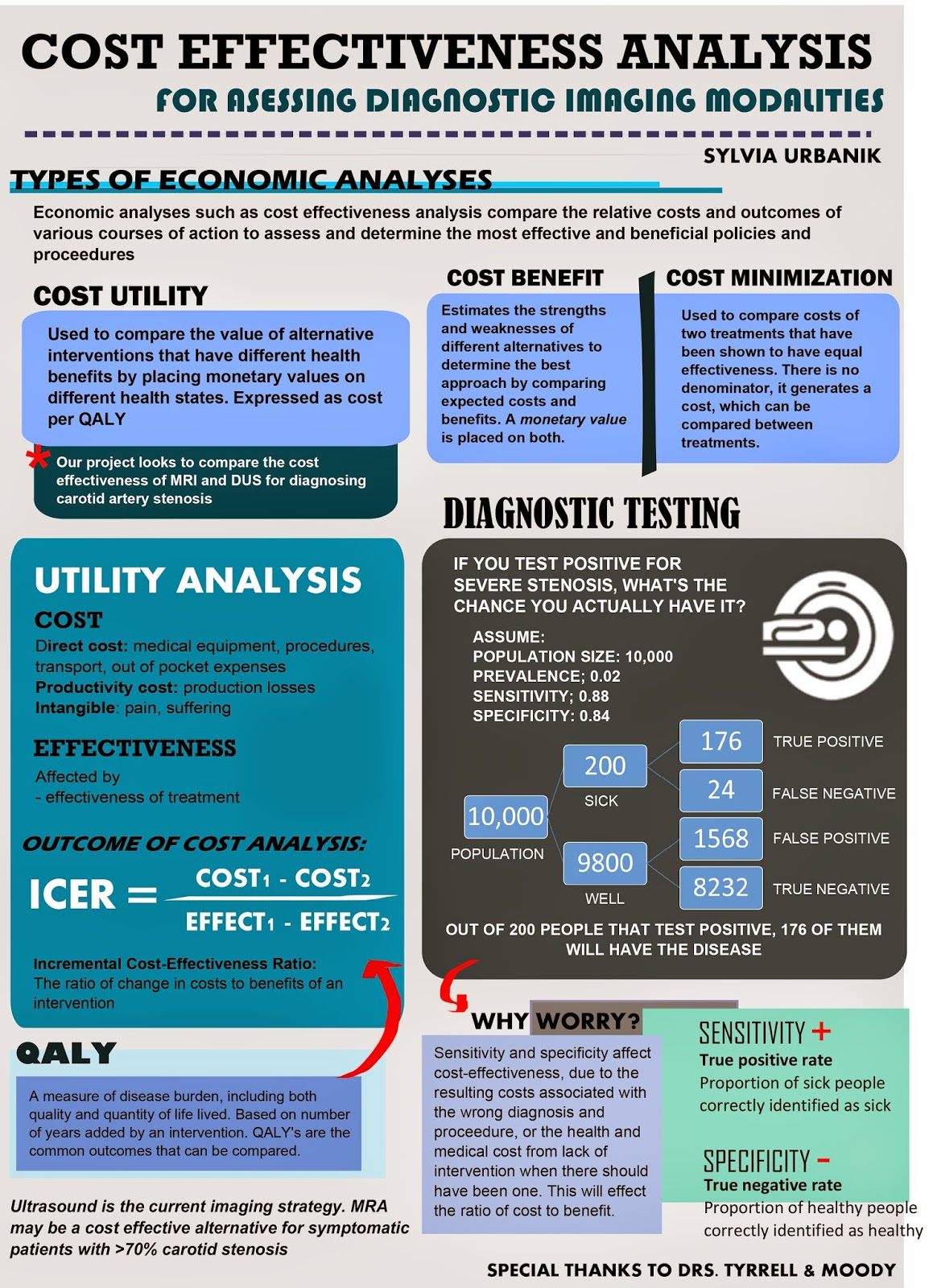 |
| ROP Research Forum March 5th, 2015 – Sylvia Urbanik |
Sylvia is a second year student studying cell and molecular biology. She is currently finishing up her Research Opportunity Program that spanned the fall and winter semesters, and also recently represented us at the March 5th ROP research forum along with her partner and predecessors.
Well done, Sylvia!
Stay tuned, next Kevin Chen will be modeling with TreeAge…
See you in the blogosphere,
Pascal Tyrrell
Research Opportunity Program: Imaging Carotid Stenosis
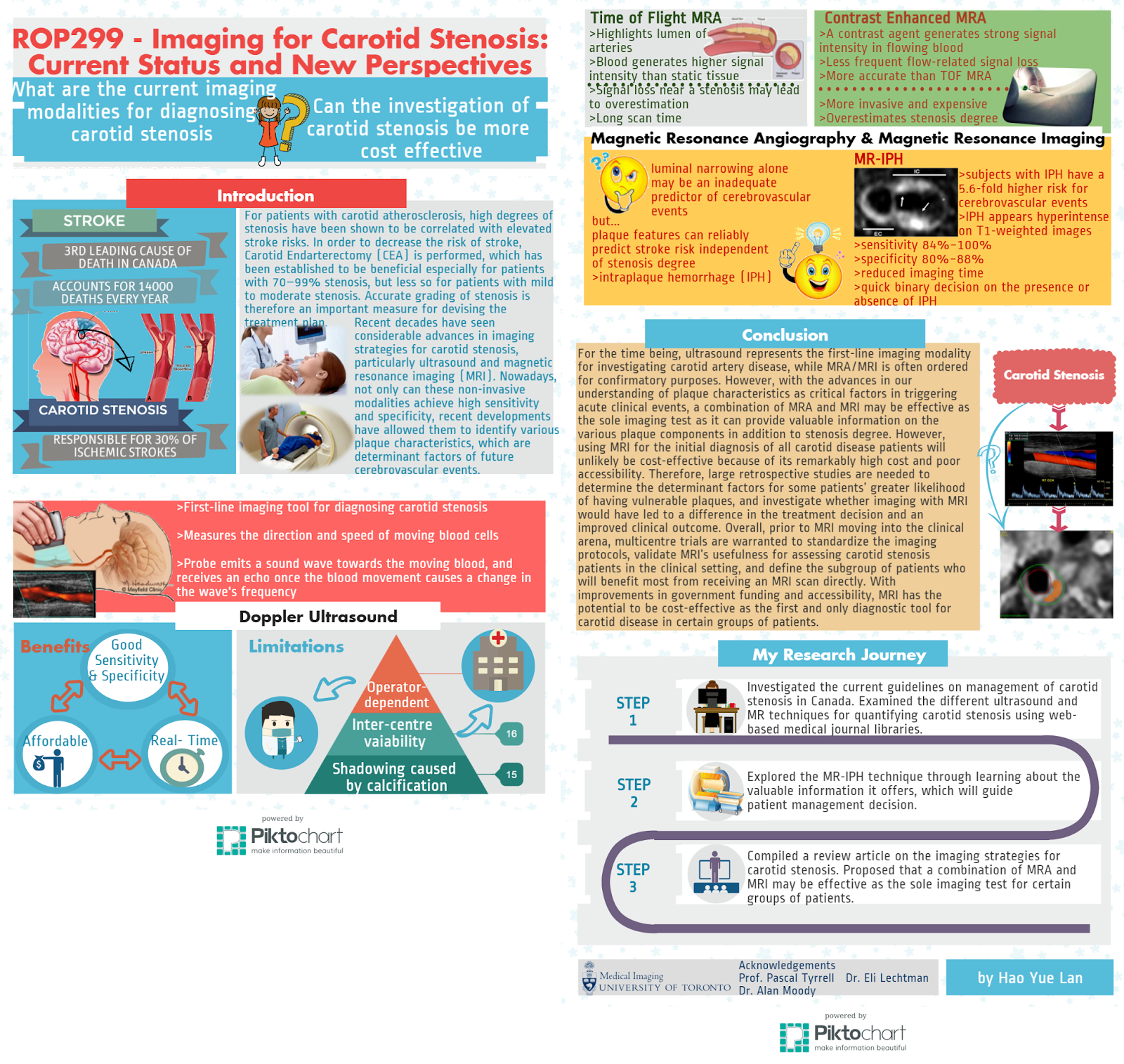 |
| ROP Research Forum March 5th, 2015 – Helena Lan |
Helena is a second-year student pursuing a specialist in Pharmacology and Toxicology at the University of Toronto. Participating in ROP299 this past summer (see here) has opened many doors for her. She is currently assisting Pascal on a systematic review on research methodology and biostatistics in medical imaging, working as a research assistant for a medical education study, participating in the research abroad program at Karolinska Institutet this summer… and recently represented us at the March 5th, 2015 ROP research forum!
Helena examined the technical aspects and information provided by two major imaging modalities, MRI and ultrasound, for diagnosing carotid stenosis. She suggests that MRI holds great promise to serve as a cost effective test for carotid stenosis as well as a tool for assessing vessel health and plaque composition that would provide important information for patient management decisions.
Stay tuned, next Sylvia Urbanik will be talking about cost effectiveness…
See you in the blogosphere,
Pascal Tyrrell
Research Opportunity Program: What Is Carotid Stenosis and How Are We Treating Affected Patients?
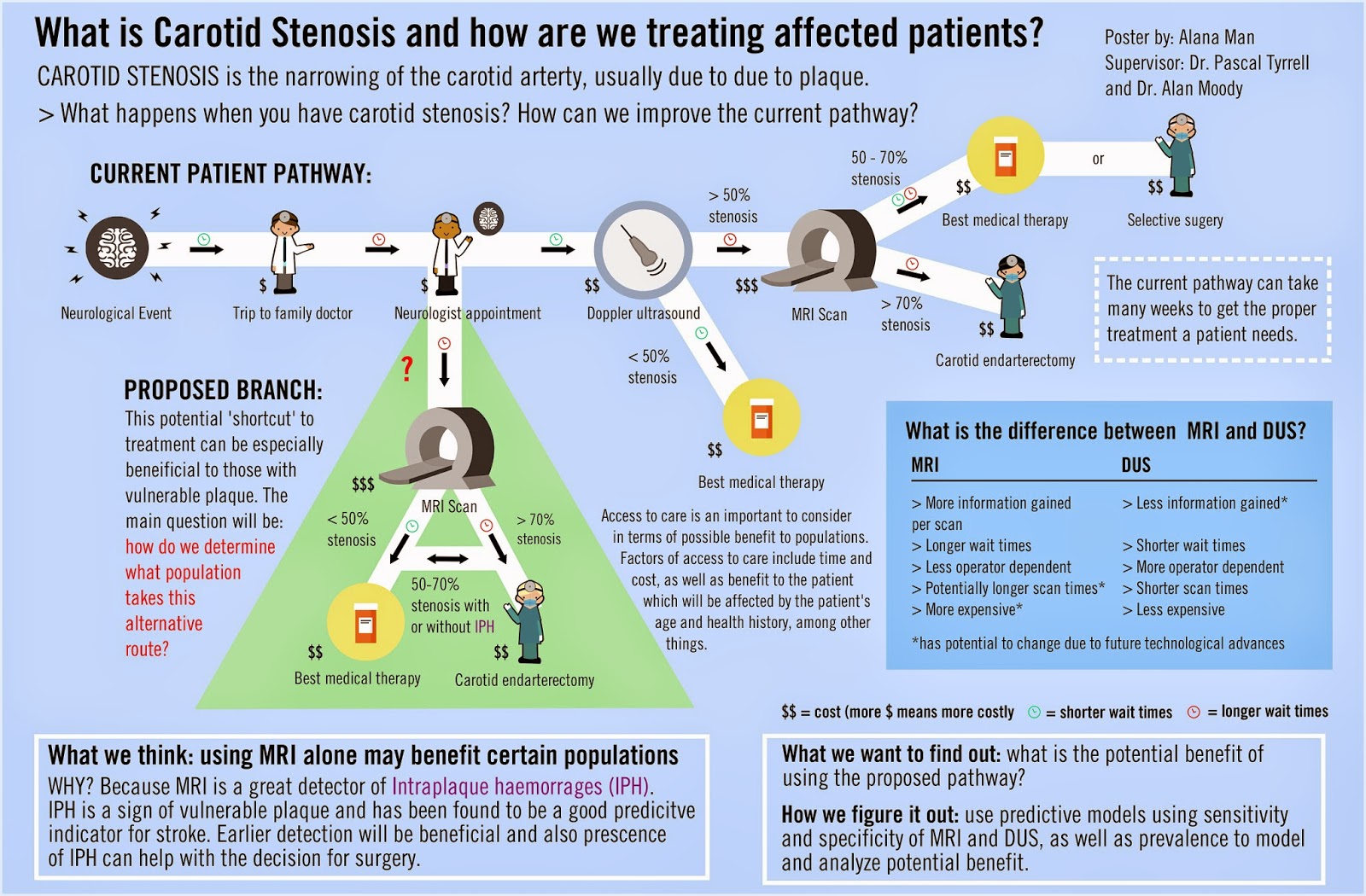 |
| ROP Research Forum March 5th, 2015 – Alana Man |
Alana Man is a second year University of Toronto student pursuing a specialist in Bioinformatics and Computational Biology and a major in Immunology. She was a Research Opportunity student last summer with MiVIP (see here) and recently represented us at the March 5th, 2015 ROP research forum.
Alana’s project focused on care for patients with carotid stenosis in Toronto, Ontario, Canada. She looked at the different factors contributing to access to diagnostic testing such as procedure costs, wait times, and the differences between available imaging modalities and explores whether MRI could be the diagnostic test of choice over DUS for people at increased risk of carotid stenosis.
Well done, Alana!
Stay tuned, next Helena Lan will be comparing MRI and DUS…
See you in the blogosphere,
Pascal Tyrrell
Happy Late New Year 2015!!!
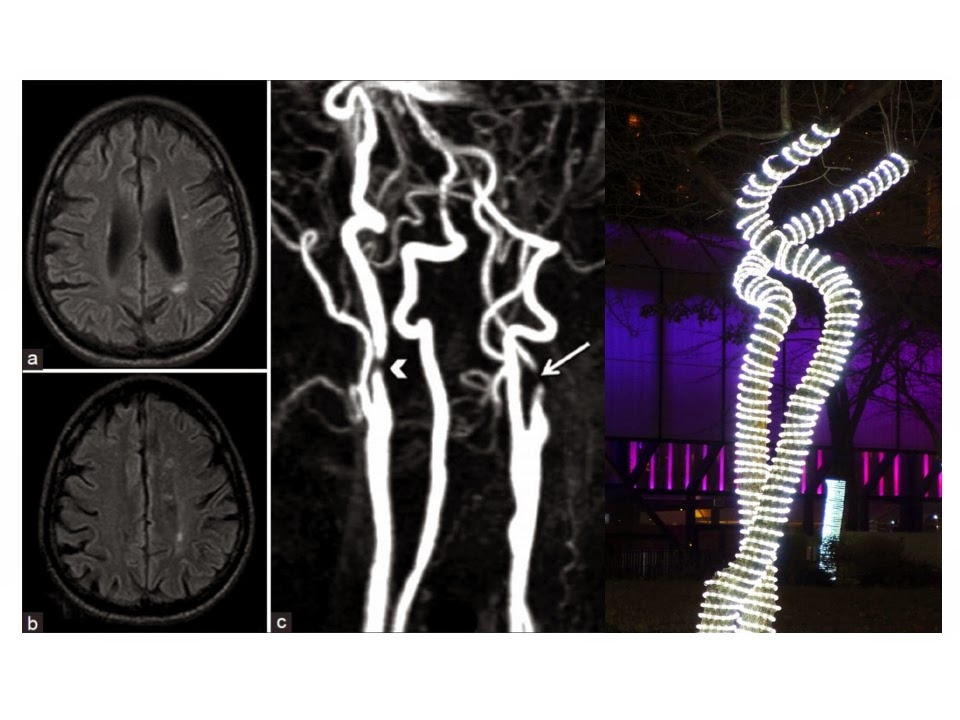 |
| The Moody Tree |
Ok, so I may have taken a longer break than I should have. Where was I you ask? I was enjoying some R&R with my family. My kids are at great ages – 15, 11, and 6. Then, of course, when I got back to my desk – whammo! The deluge of work. This morning, as I sat on the GoTrain on the way into Toronto, I thought of you and happily sat down to write my first post of 2015.
First, a thank you for your readership. We are soon approaching our first anniversary (next month) and my programs (MiVIP and MiB) and this blog are chugging along famously… all because of you!
 |
| Chicago Bean |
Next, a funny story to explain the picture above. When I attended the RSNA last December (see my post here on this event) I brought along my old film camera for fun as I enjoy photography and decided to reminisce a little. To your right is a picture of the Chicago skyline reflected on the “Bean“. See me?
I hadn’t developed film in so long that I almost ruined it – in my laundry room between all of my family’s clothes, the ironing board, buckets, detergents… Anyway, I also had with me my trusted digital for snaps and one evening I was invited to a function at my boss’ hotel and he said to me:”Let me know what you think of the Christmas lights on the trees in front the hotel on your way in”. Alan Moody is an uber-radiologist, the chair of our department, and loves imaging the carotid arteries. As our minds often operate on the same wave lengths, I took the picture and voila – the Moody Tree was born!
There is no end to the fun we have here in the Department of Medical Imaging…
Even though this is not a “MiWORD” post how about you wish a belated Happy New Year to someone you have not been in touch with yet? Send them a quick text or better yet, send them the link to this post and tell them to visit the Moody Tree next time they are in Chicago during the holidays…
See you in the blogosphere,
Pascal

